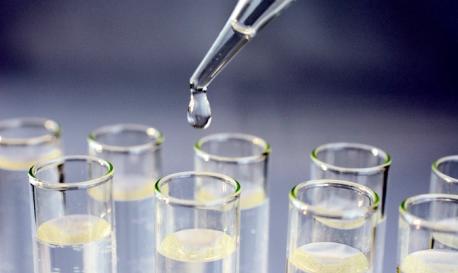Salivary Diagnostics
Overview
What if we could detect viral or bacterial infections, gum disease, salivary gland disorders, or even oral cancer in as little as five minutes using just a sample of saliva? Salivary diagnostics has immense potential to revolutionize oral health monitoring and disease diagnosis. Salivary diagnostics combine the power of chemistry, biology, computational science, and engineering within a portable device that can analyze, at the point-of-care (in locations where patients receive care), indicators of a variety of diseases and conditions affecting the mouth and the whole body.
Why is Salivary Diagnostics Research Important?
Saliva offers a window into the state of a person’s health. Saliva contains many of the same molecules and biomarkers (indicators of your health status) found in blood that are already being used for diagnostics. Saliva-based diagnostic tools offer significant advantages over blood, such as being:
- Accessible. Saliva can be easily collected without the need for specialized training or equipment, and it is well-suited for use in places where there are limited resources, such as in rural areas.
- Cost effective. It costs less to collect and process saliva samples.
- Fast. Results can be obtained within minutes.
- Repeatable. Regular saliva sampling can be used to monitor health or follow the status of a disease or disorder over time.
- Safe. Collecting saliva is non-invasive, painless, and easily performed. It comes without the risk of bleeding or infection that can occur with blood draws.
How is NIDCR Investing in Salivary Diagnostics Research?
NIDCR invested over $3 million into salivary diagnostics research in fiscal year 2023. NIDCR supports basic, translational, and clinical research to foster the development and use of salivary biomarkers and devices.
Examples of NIDCR-supported research include:
- Biomarker discovery. Scientists are studying the molecules in saliva, including proteins, DNA, RNA, metabolites (substances broken down by the body), antibodies, exosomes (small particles secreted by cells), and microbes using comprehensive “omics,” machine learning tools, or molecular tests to help identify biomarkers useful for detecting diseases and monitoring health.
- COVID-19. Researchers are examining the feasibility of point-of-care testing for detecting SARS-CoV-2, the virus that causes COVID-19, as the saliva of people with COVID-19 can contain high levels of the virus.
- Dry mouth and Sjögren’s disease. Investigators are developing a salivary function index and a point-of-care test for salivary gland dysfunction to predict dry mouth severity. They are also building a new platform to capture and analyze salivary biomarkers for Sjögren’s disease, an autoimmune disease that damages salivary glands, resulting in dry mouth.
- Gum disease (periodontitis). Researchers are establishing a simple single-cell detection method for microbes involved in the development of gum disease and developing a sensor to measure salivary biomarkers to predict gum disease and monitor its progression.
- Oral cancers. Scientists are supporting the development of a point-of-care test that uses saliva to detect and monitor oral cancers, including human papilloma virus (HPV)-positive oral cancers. They are also establishing molecular-based saliva tests to identify precancerous oral lesions likely to develop into cancer.
- Therapeutic drug monitoring. Investigators are assessing continual real-time tracking of drug levels in saliva via a biosensing device placed in the mouth. This method can help advance more precise delivery of medications.
March 2025

